
Successful empathetic marketing is about connecting your audience and your brand. That doesn’t mean just throwing ads at your audience. It means creating truly valuable assets — content that serves customers’ needs and addresses their most significant pain points.
This type of content is much easier to create when it’s informed and driven by empathy. When you put yourself in your customers’ shoes, you can more easily acknowledge struggles and think critically about the best solutions.
Below, let’s go over why empathetic marketing is such a powerful strategy for businesses of all types and sizes, tips for infusing more empathy into your marketing, and a few real-life examples of empathetic marketing in practice.
Table of Contents
What is empathetic marketing?
Empathetic marketing is the practice of putting yourself in your customers’ shoes to tailor your marketing to their specific wants and needs. Using empathy in your marketing is customer-centric and involves a deep understanding of who your customer is, their biggest challenges, and what motivates them to take action.
The Benefits of Empathetic Marketing
As Dr. Brené Brown notes, “Empathy is feeling with people.”
Showing empathy in your marketing helps build trust between your brand and your customers. And during a time when more consumers are losing confidence in brands, brand trust is a major win if you can achieve it.
A 2022 PwC survey found that only 30% of consumers have a high level of trust in companies.
If you can get on the other side, however, you may be on your way to becoming one of the most trusted brands by consumers.
All it takes is a more insightful perspective on where your customer is coming from, their needs, and how your brand can help them meet their goals.
Tips for Empathetic Marketing
You know you want to infuse more empathy into your marketing, but how exactly can you do that? Here are the best tips to remember if you want to be an empathetic marketer.
Put the customer at the forefront.
Empathetic marketing starts and ends with your customer, so it only makes sense to put their wants and needs at the forefront.
Empathy is about understanding something from another’s perspective by seeing something through their eyes. To empathize with customers, imagine their experience with your brand. Look at your product or service from their viewpoint, and think about each step they may take.
Better yet, you can follow real-life customer journeys to see their actions when shopping on your site or digesting your content.
To truly understand your customers’ experiences with your brand, take time to dive into each step of their journey so you can better understand what they may want or need during each stage.
Be open to feedback.
Operating in a vacuum is easy because that’s how they’ve always been done. But to truly practice empathy in your marketing, you have to bring your customers into the planning aspect so you can hear directly from them.
They can share what they want to see from your brand or what should be changed.
To collect feedback from your audience, go directly to the source. Run a survey or host a focus group to learn exactly what your customers’ challenges are, what they need, and how they view your brand.
These insights can help you better understand how your product or service plays a role in helping your customers navigate their challenges or achieve their goals.
Your customers will tell you if the messaging doesn’t land. Be open to shifting your approach if that’s what it takes for your message to resonate.
Always be listening.
While you should always collect direct feedback from your customers and audience, gathering insights that they don’t personally share with you is essential. People tend to be more honest when they aren’t talking directly to a brand or think the brand won’t see their comments.
Pay attention to the overall sentiment when your brand is mentioned online to see the general feelings towards your company, whether positive or negative.
Tune into your customers’ conversations, the feedback they’re sharing about their experience, and their general sentiment about your brand. You can do this by monitoring social media comments, checking out reviews on your site, or tracking reviews on third-party sites.
Be genuine.
Understanding your audience and their various needs is essential to empathetic marketing. The last thing you want is to break their trust. Being fake or putting on a persona is the quickest way to do that.
Whenever you share content or conduct outreach, be genuine in your approach. Transparency goes a long way in being authentic, so always lead with empathy if you want your content or messaging to resonate.
Provide your customer with the right content.
After all of the listening and empathizing you’ve done, it would be a shame not to put that learning into practice. And yet, some brands continue to share content their audience isn’t interested in. This is the last thing you want to do.
If you want your marketing approach to resonate with your customers, delivering the content you promised them is essential.
After running surveys or focus groups, explore how you can adjust your product, messaging, or communication channels to better meet the needs of your most loyal customers.
Empathetic Marketing Examples
Now that you know what empathetic marketing is and how to incorporate it into your strategy, let’s walk through eight brands that nail empathetic content marketing across various media.
LUSH
With the tagline, “Fresh, handmade cosmetics,” LUSH is a beauty brand that is all about natural products.
As such, we see its radical transparency in the “How It’s Made“ video series, where LUSH goes behind the scenes of some of its most popular products.
Each episode features actual LUSH employees in the “kitchen,” narrating how the products are made. Lush visuals (pun intended) showcase just how natural the ingredients are.
You see mounds of fresh fruits, tea infusions, and salt swirled together to become the product you know and love. It’s equal parts interesting and educational.
Why This Works
LUSH customers want to buy beauty products that are truly natural. They care about using fresh, organic, and ethically sourced ingredients — hence why the videos feature colorful, close-up shots of freshly-squeezed pineapple and jackfruit juices to drive that point home.
Taking customers inside the factory and showing them every part of the process — with a human face — assures them that they can consume these products with peace of mind.
LinkedIn Talent Solutions provides HR professionals the tools they need to improve recruitment, employee engagement, and career development practices within their organization.
LinkedIn Talent creates helpful content on a dedicated blog to supplement these tools. The blog offers tips that address the challenges of the talent industry. LinkedIn also develops reports offering deeper insight into different industry sectors, such as this Workplace Learning Report.
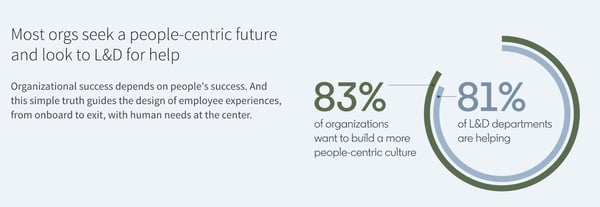
Why This Works
One effective empathy marketing tactic is education. LinkedIn wants to empower its audience to do work and hire better (and use its product to do so).
This report is just one tool that offers its audience deeper insight into the industry while positioning the brand as a powerful resource.
Through offerings like this, customers learn that they can rely on LinkedIn as a trusted source to guide them in the right direction, and LinkedIn can continue to provide solutions through its product offerings. It’s a win-win all around.
The Home Depot
The Home Depot is a home and garden supply store that caters to all types of builders and DIY-ers — whether you’re a construction worker building a gazebo or a homemaker experimenting with gardening.
In other words, their content must cater to various demographics.
Home Depot is all about DIY, so its marketing focuses on what its supplies can help you do.
This “How to Plant a Wildflower Garden with Seeds” guide teaches consumers to grow their own wildflower garden using seeds, common flower types to plant, and what supplies they need. It even outlines the difficulty level and estimated time to complete the project.
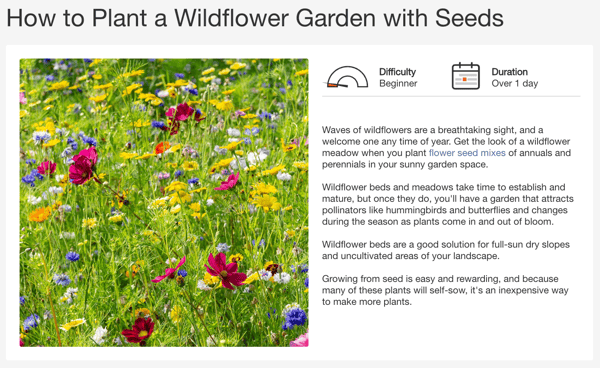
Why This Works
As one of the most trusted brands by consumers, Home Depot knows its customers rely on the store to supply them with DIY tools and navigate these hands-on projects — with a little encouragement along the way.
This quick guide delivers on these needs and inspires customers to take action.
Extra
We’ve seen just about every twist on gum marketing: sexy encounters, romantic trysts, and more. Extra is pushing past that narrative.
The brand realizes that gum is a seemingly mundane product, but its omnipresence means it’s there for many of life’s little moments.
Hence, the #ChewItBeforeYouDoIt campaign is all about taking a moment to chew a piece of gum before doing, saying, or acting during your daily life. Extra suggests that doing so can be the difference between a good moment and an awkward experience.
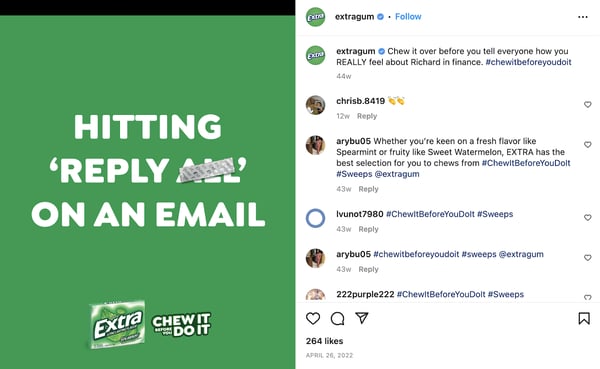
Why This Works
In many ways, gum is a product meant to enhance intimacy, making your breath fresh for more closeness. In our techno-connected world, those everyday moments of intimacy are often overlooked.
This campaign relates to regular moments we’ve all experienced and points out how something as simple as chewing gum can make a difference in your day.
Microsoft
Microsoft offers a range of products from Azure to Microsoft 365. Many of these products are generally used by developers to build their own platforms or tools. To make sure these developers are supported, Microsoft created communities.
These communities help developers connect and learn from one another and are organized into different product categories, such as Microsoft 365 or gaming. People can tailor their experience based on what topics they’re interested in.
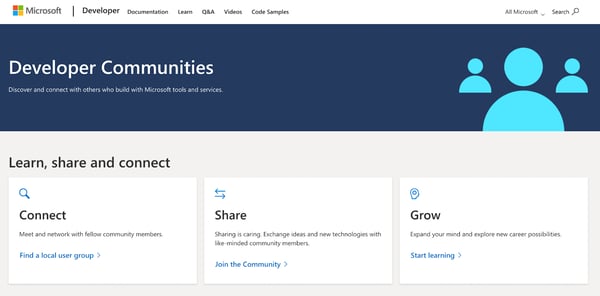
Why This Works
Developers are always seeking tips and tricks for using their go-to tools, and while there are many digital channels from which to learn, going straight to the source is always a great option.
Through interactive communities, Microsoft ensures developers can get the support and training they need to use its tools and even connect with others.
Michael’s
In a world where Pinterest dominates, Michael’s chain of craft stores is making a play to capture its own audience on its own properties. The brand provides craft tutorials and product features on a projects page on its website.
These projects offer step-by-step instructions on creating various crafts for beginners and advanced crafters alike.
Each project on the site also includes links to materials you may need that can be found in Michael’s online store. If you want more help with your craft, Michael’s even offers virtual and in-store classes for select projects.
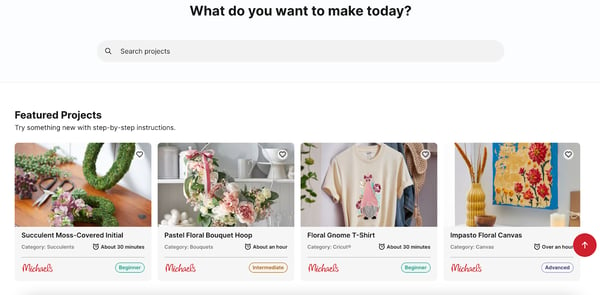
Why This Works
Crafting is an exciting hobby, but not without its own frustrations. Providing useful tips and hacks on how to do things better via a free publication helps readers do more of what they love with fewer headaches.
Additionally, fans get to share their enthusiasm through social by using the hashtag #MakeItWithMichaels, helping Michael’s extend its reach to a bigger crafting audience.
JetBlue
JetBlue is a brand known for superb customer service and humor. At this point, we know where it flies and we know its hook, so its marketing needs to extend beyond the services provided.
As such, JetBlue’s content focuses more on the world of flying and the experiences we all have.
JetBlue is a brand known for superb customer service and humor. At this point, we know where it flies and its hook, so its marketing needs to extend beyond the services provided.
As such, JetBlue’s content focuses more on the world of flying and the experiences we all have.
JetBlue addresses every type of customer who may fly on its planes, from families to pets to children. That’s one reason the airline launched JetBlue Jr., an educational video series for kids ages 7–10.
The videos go over all types of aviation topics, from vocabulary to physics, in an entertaining and digestible way for kids to learn.
Why This Works
If you’re a parent, you know how much of an undertaking it can be to fly with children.
Brand marketing isn’t often tailored to children, so it’s refreshing to see JetBlue consider all passengers and empathize with a parent’s desire to keep their kids entertained while traveling.
Girlfriend Collective
Girlfriend Collective is a sustainable clothing brand. While it has a devoted following, it’s always searching for ways to more deeply connect with its audience. The company’s email marketing channel is a fantastic outlet for that.
Girlfriend Collective uses email to share new products or upcoming launches. The brand also generally uses a targeted approach to help customers make purchasing decisions, sending more personalized emails.
One email from the brand was more personal than most and showed deep empathy and understanding for its audience.
Before Mother’s Day, Girlfriend Collective sent this email to customers, allowing them to opt out of receiving Mother’s Day promos.
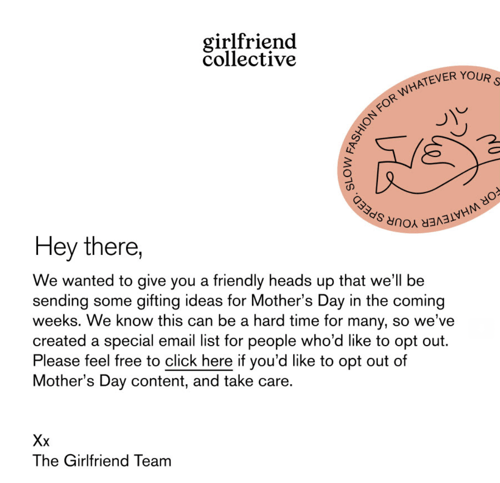
Why This Works
Holidays like Mother’s Day or Father’s Day can be emotional for many people for various reasons. Girlfriend Collective gave its audience a choice to opt out of seeing these potentially triggering emails, which not many brands take the opportunity to do.
This move demonstrates that Girlfriend Collective cares about its customers and sees them as humans.
Ready to Try It?
Approach the content you seek to create from a perspective that puts others’ wants, needs, and dreams before your own. That’s the smartest way to grow an audience.
In doing so, you’re showing people that you care about them as humans, first and foremost. People want to work with (B2B) or support (B2C) people that they like and companies that they believe “get” them.
You can always talk about your brand and what you’re peddling once a connection and a relationship are established. But if you do things right, people will be drawn to you, and you won’t ever have to toot your own horn.

![Download Now: Free Marketing Plan Template [Get Your Copy]](https://no-cache.hubspot.com/cta/default/53/aacfe6c7-71e6-4f49-979f-76099062afa0.png)




